…and our new, abruptly evolving culture.
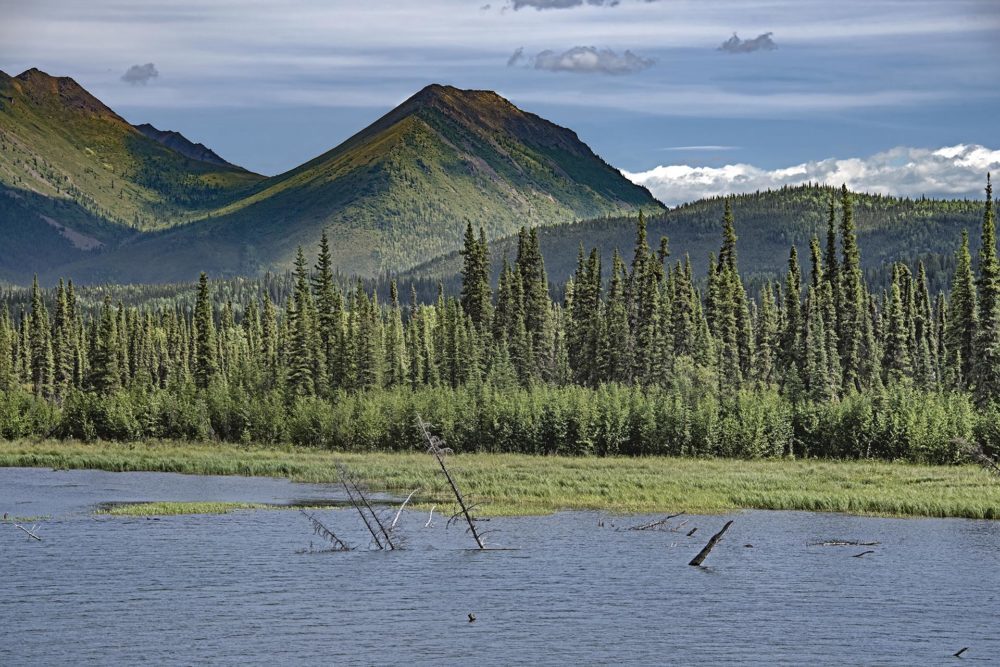
This is permafrost collapse on the Glenn Highway in southeastern Alaska near Slana. All photos by Bruce Melton.
AUSTIN — The origin of Covid-19 is still in dispute in academia. The classic connection is from contemporary bats via pangolins or civets, allowed or enhanced by habitat loss and warming that creates animal stress leading to increased animal disease, and the habitat loss crowding animals ever closer to our burgeoning human population. Or maybe it was just bad luck with some populations that eat different animals than other populations.
Meanwhile, permafrost collapse from climate change is 70 years ahead of schedule and plausibly emitting, not sequestering, as many greenhouse gases as are emitted every year by all of transportation across the globe. New research is showing reanimation of viruses preserved in permafrost is real and though no research has yet fingered permafrost collapse as the culprit, scientists have been warning us about things like this for 30 years.
First off, the origin of COVID-19, was not from a lab experiment gone wrong or deliberate genetic modification, this is definitive.
Initial reports of the origin being contemporary bats comes from two places: bats are historically a major source for coronaviruses with abundant academic publishing in the past, and the second place was widespread reporting of an inaccurate February 20, 2020 paper that did not evaluate the entire COVID-19 genome. An opinion piece in Nature cites two rebuttals that found an inadequate 90 percent similarity of the COVID-19 virus entire genome to contemporary coronaviruses. (https://www.biorxiv.org/content/10.1101/2020.02.13.945485v1, https://www.biorxiv.org/content/10.1101/2020.02.18.954628v1.full.pdf)
The coronavirus does not transmit directly
from bats to humans.
The coronavirus does not transmit directly from bats to humans but first through an intermediary like pangolins (spiny anteaters) or civets, (or in the case of MERS through camels), and genetic analysis in two other papers shows transmission through these intermediaries was not the case with COVID-19.
(https://www.biorxiv.org/content/10.1101/2020.02.19.950253v1, https://onlinelibrary.wiley.com/doi/full/10.1002/jmv.25731)
The earliest known case on December 1 was not in Wuhan and no epidemiological link was found between this case and the Wuhan fish market most commonly referred to as the place of origin in popular literature. Also identified in this paper, only 27 of the first 41 cases were exposed to the Wuhan fish market or persons linked to the Wuhan fish market.
The first infection date is plausibly being pushed back via a different line of science that uses the same genetic technique for reconstructing the prehistoric population movements of humans. The original publishing on April 22 looked at the first 166 genetic samples taken in the early days of the outbreak. It has been both widely criticized and applauded and likely represents the ongoing struggle for finite facts presented by this astonishingly complicated problem of determining the origin of Covid-19. A more definitive evaluation of 1,001 samples is forthcoming, though don’t hold your breath about the origin controversy being solved quite yet.
The above is by no means an exhaustive description of the volumes of research on the origin of COVID-19, but it is meaningful. The origin of the 2002 SARS coronavirus outbreak was not positively identified until 2017.
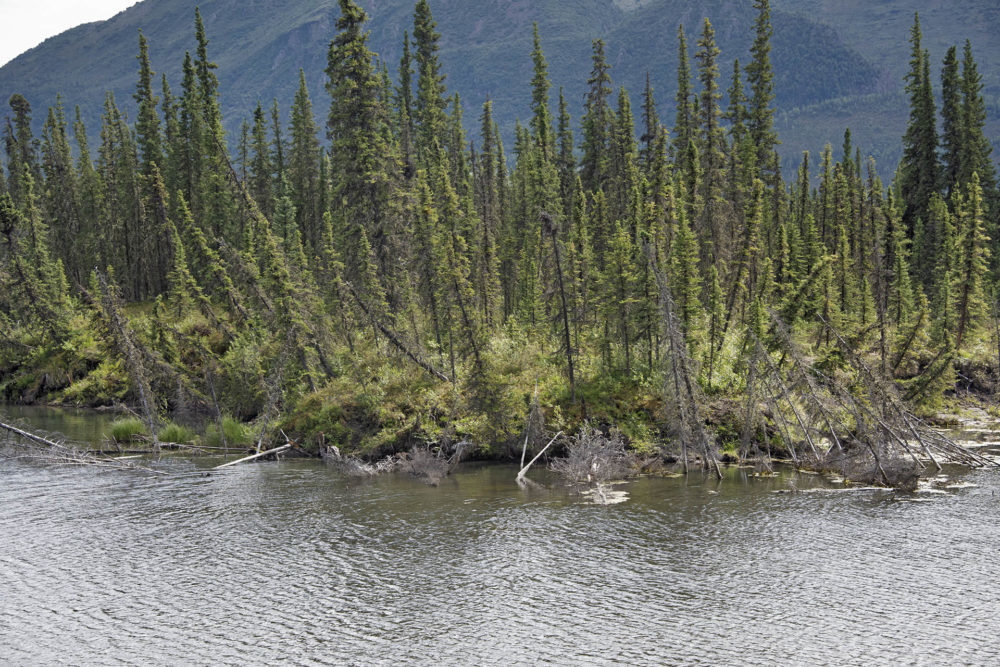
Permafrost can be over 2,000 feet deep in Alaska and to the casual observer, the depths of these collapse lakes is only known when the tops of tall trees stick up above the water.
Climate change connection
The climate change and human-caused reasons for the pandemic are many. Some are more reported in the popular press than others. The most obvious revolves around human-caused changes to our world as is well described in the February 2020 edition of the International Journal of Circumpolar Health. Habitat loss has crowded more animals into smaller places while the human population continues to grow, creating, more opportunities for human/animal interaction.
Climate warming and associated environmental changes in addition to habitat loss and crowding creates stress, allowing for greater numbers of and more serious disease infections in animals — which then directly corresponds to a greater transmission rate to humans called zoonotic transmission, literally from animals to humans. But there is another pathway that is as yet unexplored in the recent work on the origins of COVID-19. This is permafrost collapse.
We have been warned by climate scientists that permafrost would thaw on a warmer planet.
We have been warned by climate scientists for at least 30 years that permafrost would thaw on a warmer planet and it could come as abrupt collapse with vast global warming emission from what could be as much as a million years of accumulation of partially decomposed and preserved organic material stored in permafrost. Natali et al, on October 21, 2019 in the journal Nature Climate Change tells us that not only has permafrost collapse begun, but it has flipped northern frozen lands from a carbon sink to a carbon source. That is, permafrost is no longer storing or sequestering carbon, it is emitting it.
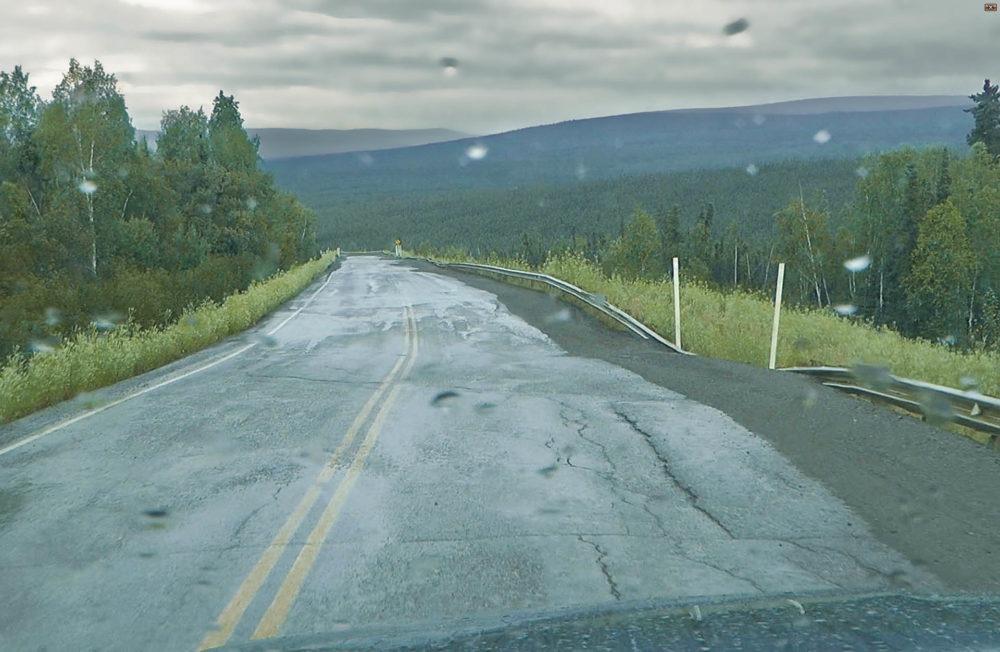
These permafrost melt craters are called thermokarst – literally, heat-holes. They form when permafrost abruptly thaws. This abrupt thaw is common with high ice content permafrost and is caused by the heat of fusion, where to change the temperature of ice from 32 to water at 33 degrees, 289 times more heat must be invested in the ice than to change the temperature of ice by one degree while it remains frozen. This is a threshold or tipping event where a tiny bit of warming can create a tremendous change, once all the heat has been invested into the ice to overcome the heat of fusion.
The emissions rate of collapsing permafrost is estimated at 2.3 gigatons (Gt) per year of carbon dioxide, on average from 2003 to 2017 — not including methane. (Methane has not been robustly evaluated in this collapse yet.) This 2.3 Gt average CO2 emissions per year is also understating and the reason being that it is the annual average from 2003 to 2017. If permafrost was sequestering or stable in 2003, and it likely was, and because warming today is almost double that in 2003, and we know permafrost thaw is increasing rapidly, logically the emissions rate today is far more than it was in 2003.
The reason a rate in 2017 was not given is simple climate variability. The year to year rate of emissions is too variable and there are too few years of data to be statistically valid, so only an overall average was calculated. The true rate today could be double or even quadruple the 2.3 Gt number. The average annual emissions of CO2 from all of transportation globally every year is about 7 Gt, and from all of the United States it is about 5.4 Gt.
This amount of emissions from permafrost is certainly a wake-up call as implications are tremendous for further warming, but the total land area of permafrost in the Northern Hemisphere is 5.8 billion acres. Up to 20 percent of permafrost may currently be involved in collapse, already, today. This is 1.16 billion acres which is nearly three times the size of Alaska.
NASA’s Jet Propulsion Laboratory has identified two million methane hot spots around thaw lakes in Alaska and northwest Canada in a 7.4 million acre infrared aerial survey. Relating these results to the 20 percent of 5.8 billion acres of Northern Hemisphere permafrost susceptible to abrupt thaw would yield 314 million thaw lakes.
This collapse is happening 70 years
ahead of schedule.
This collapse is happening 70 years ahead of schedule according to work out of the University of Fairbanks, Alaska, where in 2017 it was found that permafrost thaw was leading the entire state in a flip from carbon sink to carbon source with emissions (not sequestration) from 2012 to 2014 that averaged 106 million tons per year, twice as much as New York City’s annual emissions.
There are two types of permafrost thaw: abrupt thaw with what is called thermokarst, or thaw collapse craters, and general thaw subsidence. Thaw subsidence is where land gently and mostly uniformly subsides as ice in permafrost soils thaws and runs off or evaporates. This subsidence thaw is not yet accounted for in models and the thermokarst collapse is also still too new to be fully accounted for but Turetsky et al., in Nature Geoscience says modeling could underestimate permafrost collapse by seven times.
Permafrost can be over 2,000 feet thick in Alaska and nearly a mile deep (over 5,000 feet) in Siberia and in most places it is mostly ice. The craters left behind when it thaws can swallow entire forests. The subsidence from thaw causes what are called drunken trees that list precariously as their feet are melted out from under them. More work needs to be done with subsidence melt but preliminary test plots show 4.25 inches of natural subsidence in the last nine years that doubles the amount of carbon emitted otherwise.
In a settlement in Siveria called Cherskiy, National Geographic reports that surface soils in the active layer that normally thaws and refreezes every year, did not refreeze over the winter of 2017/2018. It sounds impossible where winter temperatures routinely fall below 40 below, but warmer temperatures, as long as it remains below freezing, allow more snow to fall. Snow is an insulator. In Cherskiy last year, it snowed big and it snowed early and the resulting insulation prevented the normal Siberian cold from freezing the ground. At the University of Alaska, Fairbanks, frozen ground research plots reveal a similar trend. In 1989 the complete freeze-up of the active layer was mid-January. Since 2014 it’s been late February into March.
Permafrost pathogen reanimation
With the as yet unknown origins of COVID-19, as with dangerous pathogen outbreaks in the past, virus survival in permafrost has been a controversial topic of conversation. Recent findings are putting this controversy to rest, but popular reporting on the unlikelihood of virus survival remains.
Anthrax outbreaks occurred in Siberia occurred in the 17th-18th century, 14th-15th century, and 13th century. In 2015 and 2016, findings from the State Research Center for Applied Microbiology & Biotechnology in Obolensk, Russia, show that these strains of anthrax originated in the 13th century and the researchers tell us, “A common feature of these strains is their conservation in permafrost, from which they were extracted either due to the thawing of permafrost or as the result of paleontological excavations.”
In Northern Russia between 1897 and 1925, 1.5 million reindeer died from anthrax and many were buried to prevent further infection. These reindeer are now thawing. Research from the Russian Academy of Sciences tells us, “Climate change in the Arctic may increase the risk of propagation of zoonoses due to the expansion of vector habitats and development of more favorable climatic conditions for their survival during the winter season, increases in average air temperatures, and permafrost degradation.”
Interesting new things are being discovered about permafrost and microbiology.
Some really interesting and new things are being discovered about permafrost and microbiology. Microbiologist Janet Jansson from the U.S. Department of Energy’s Pacific Northwest National Laboratory tells us about her research, “The microbes in permafrost are part of Earth’s dark matter. We know so little about them because the majority have never been cultivated and their properties are unknown.”
She continues, “This work hints at the life strategies they use when they’ve been frozen for thousands of years… For example, even though the permafrost microbes lived at subzero temperatures and had a lot of proteins for protection against freezing conditions, they also wielded proteins that indicated they could move through the soil, use iron for energy or live on methane.” She also relates that when permafrost thaws, the biologic community that existed before in the active zone that thaws every year is replaced with a new one from reanimation of the microbes in the frozen permafrost.
A literature synthesis in the journal Evolutionary Biology titled, “Back to the future in a petri dish — Origin and impact of resurrected microbes in natural populations,” with over a hundred citations, has some very germane statements on microbiological pathogen reanimation from permafrost:
Over the past few years, there has been increasing evidence that the permafrost is a gigantic reservoir of ancient microbes or viruses that may come back to life if environmental conditions change and set them free again.
Due to climate change and other types of anthropogenic change, ancient pathogens can re-emerge. This can lead to spatial or temporal mismatches between antagonists (host and pathogens), resulting in host shifts, and the rapid spread of disease across susceptible host populations not historically exposed to particular pathogens.
Melting of permafrost and ice sheets will enable the trapped microbes to flood into the oceans, which could speed the process of evolution. As bacteria can easily trade genes by recombination, ancient resurrected bacteria can mix with current ones which can introduce new traits into the current population.
The resurrection of ancient microbes does not necessarily have to have a negative outcome. Studies on resurrected microbes can provide key insights into historical reconstruction, epidemiology, and evolutionary patterns of pathogens and hosts. Molecular typing of resurrected ancient microbes provides the opportunity to reconstruct past epidemics which could contribute to a better understanding of emerging infectious diseases. These new insights could add to the development of preventive measures of epidemics. Next to reconstructing past epidemics, it could also contribute to knowledge on Earth’s past climate. As living bacteria can be found in ice cores from 420,000 years old, one could extrapolate to conditions in outer space as these microbes seem to survive for millennia in such extreme conditions (extremophiles). Additionally, ancient viruses and bacteria can provide an important bank of genes which can be implemented in vaccines, new antibacterial drugs, or even cancer-fighting chemicals.
New aquifers are being born in the Arctic as the thaw continues.
New aquifers are being born in the Arctic as the thaw continues say researchers at the University of Texas, Austin. This water is flowing into the Arctic Ocean at the base of the thaw, on top of the remaining permafrost and its quantity is truly mind boggling at 100 times more than all the rivers draining into the Arctic in their study area which encompassed the Beaufort Sea north of Alaska and Canada, including the mighty McKenzie River, second only in size in North America to the Mississippi. The organic material carried along with this aquifer flow –including microbiology– is 70 percent as much as all the rivers draining to Arctic in the study area.
The path into the future
There is one last piece of academic work I want to relate on Covid-19 in the Proceedings of the National Academy of Sciences on June 24 that I think is useful in helping understand a portion of our path forward. This is an opinion piece so it has no original research but its title holds a clue as to its usefulness, “What models can and cannot tell us about COVID-19.” Fundamentally it says there are challenges with all models but the guidance they provide can be extremely useful; in this case in preventing deaths.
The models themselves are only as meaningful as their parts allow and as accurate as the data used to run them. This is pretty straightforward unless one starts into the weeds of epidemiology, which I will belay for now. The bottom line with models is that most people want to know what will happen. Unfortunately, models just aren’t that great at answering this question. A much better question that models can tell us meaningful information about is, “What should we do?”
The answer to this question is exactly what many leaders in the U.S. did wrong by allowing reopening too early, that many in other parts of the world did right, or did less wrong. The models told us that if we reopened too early, bad luck would result, and the models also tell us the key to exponential spread of a highly contagious disease in a population with no immunity is lockdown, the extents of lockdown, and the onset of lockdown. A week or even a few days delay can mean the difference of tens of thousands of deaths. Early release from lockdown can be more severe and unfortunately we are about to find out how much more severe.
Our semi-extended lockdown could plausibly have avoided economic depression.
The economic results of our never before seen lockdown are another meaningful side note in this unexpected and maybe deeply foreshadowed pandemic. Our semi-extended lockdown — if it were successful — could plausibly have avoided economic depression. We may be seeing this happen in other parts of the world that were not so eager to reopen. There is also a tremendous amount of additional meaning in our cultural response to COVID-19 that bears open acknowledgement.
Let’s assume for a moment in a thought experiment that COVID-19 came from permafrost, or that very soon because of the vast collapse of permafrost that some uncontrolled global pandemic will result, and then another, and another and so on because of the hundreds of thousands of years of biologic material preserved in permafrost that will see plausible reanimation in what could be decades or less.
Our human species has developed science so advanced that it is possible we might be able to develop a rapid response to a previously unknown pathogen with no current human resistance, but more plausible is that in the near term, if (when) new pathogens are released from permafrost, we will be in the same boat that we are in now. We might be able to economically survive one of these, or even a two-fer, but what if they continue to recur?
An example of what we need to do to economically survive comes from the Travis County Commissioners Court in May. They made what just a few months ago would have been a previously unheard of goal; to have 75 percent of the entire Travis County work force work from home permanently, after Covid-19 is done with us. Why did they do this and how in the world could this be possible?
This teleworking has not gone unnoticed in the academic community.
For a decade now, demographics have shown more and more of us are working at least a little bit from home. This teleworking has not gone unnoticed in the academic community. Counterintuitively, working from home is more productive than working from the office. There are many reasons for this but the base assumption is enough said. The rest of the story is more intuitive: workers have a better attitude and employers have less office space costs.
Combined, this apparent win/win is being adopted by more and more companies. Twitter, Square, Slack — all of their workers will be working from home forever. Facebook — many of them, forever. Shopify — most of them, forever. Box (cloud storage) — almost all of them, forever. French Automaker PSA’s nonproduction staff — forever. Google, Microsoft, Morgan Stanley, JPMorgan, Capital One, Zillow, Slack, Amazon, PayPal, and Salesforce have extended their work from home abilities from September through December, and this was done in April or early May, long before the surge after the premature reopening. Work from the University of Chicago on June 19 shows that 37 percent of U.S. jobs can be done from home.
What is happening is our culture has been forced to abruptly evolve. Thankfully, we have the tools to do this, and have had them for quite some time. I have worked from a home office since 2001 and in that time my paper filing cabinets have become completely obsolete, except as a stand to hold up other obsolete office junk. A near full case of printing papers sit unused by my work station printer, itself used only occasionally in the last several years. I haven’t bought ink in probably a year.
I have been Zooming for a couple of years now. It has been nothing like in our recent Covid-times, but steady and increasing. It has at times been both a convenience in not having to drive across town for a four o’clock meeting, and a hindrance, …not another Zoom meeting. Today after what I am sure is a good 60 or 75 Zooms since March, something different is emerging in my feelings towards Zoom, or Google Meet, or whatever platform.
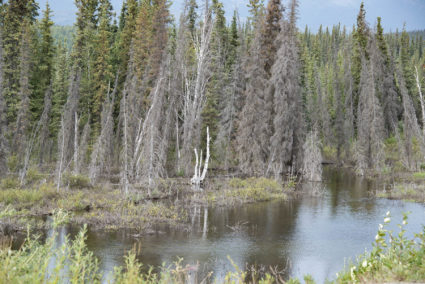
Permafrost thaw, Glenn Highway, southeastern Alaska. When we filmed permafrost thaw in Alaska in 2007, we could not find any and had to ask the ice scientists at University of Fairbanks, “Where is all this permafrost thaw we have been reading about?” They told us, some of it was right there in the city limits of Fairbanks. In 2018 when we filmed, in some parts of the state especially eastern and north on the Dalton Highway, and also into Yukon and British Columbia, Canada on the Alaska Highway, there were places where the thaw lined the roads for miles and miles.
I logged in to a policy meeting with a group of about 20 working on Austin’s new climate policy revisions about six weeks ago and some new trend had been adopted where nobody had their cameras on. I was crestfallen. In my work at my home office since 2001, inevitably I would have a five or six (or more) out-of-office meetings every week, where I would get to see the usually smiling faces of my colleagues and friends, meet new people, have lunch, run errands, etc. I have come to cherish these “away meetings” because my work from home is alone. With the shutdown there were no more in-town meetings. Zoom has extended the smiling faces into my isolation. When the smiling faces were taken away in that strange trend of everyone turning off their cameras, the life drained out of me.
We have the capacity to completely remake our culture today because of technology. There will be lots of bad things that happen because of this abrupt digital shift, like brick and mortar establishments disappearing even more than before. In their place will come new and or bigger online establishments. Things change. Also in their place will come virtual things
I like to tell folks in environmental and civic organizations that when I volunteer in efforts to try and help our leaders and transportation departments move transportation project design technology into the future that the transportation design alternatives are nearly infinite, only inhibited by our abilities to imagine. We engineers can design and build almost anything- — especially in the twenty-first century. All we need to do is imagine.
This is where we find ourselves today; forced to be here by Covid-19. On the cusp of a rapid evolution into a new digital world. Hopefully we can embrace the things we have learned and create — evolve — a better society; with far less traffic congestion and air pollution, better employee attitudes and greater productivity. Hopefully we can embrace these things without the need to shut down again, and again, and again; if this seemingly tremendous threat from permafrost pathogen reanimation is real.
[Bruce Melton, a longtime contributor to The Rag Blog and guest on Rag Radio, is a professional engineer, environmental researcher, filmmaker, author and CEO of the Climate Change Now Initiative in Austin, Texas, the oldest, independent climate science education organization in the world founded in 2005. The Climate Change Now Initiative is a nonprofit outreach organization reporting the latest discoveries in climate science in plain English, using global warming psychology to communicate this new science on the right side of the brain. The Initiative’s science reporting, films, music, and images of climate impacts happening now can be found at ClimateDiscovery.org.]
- Read more articles by Bruce Melton on The Rag Blog.
- Listen to Thorne Dreyer’s Rag Radio interviews with Bruce Melton.

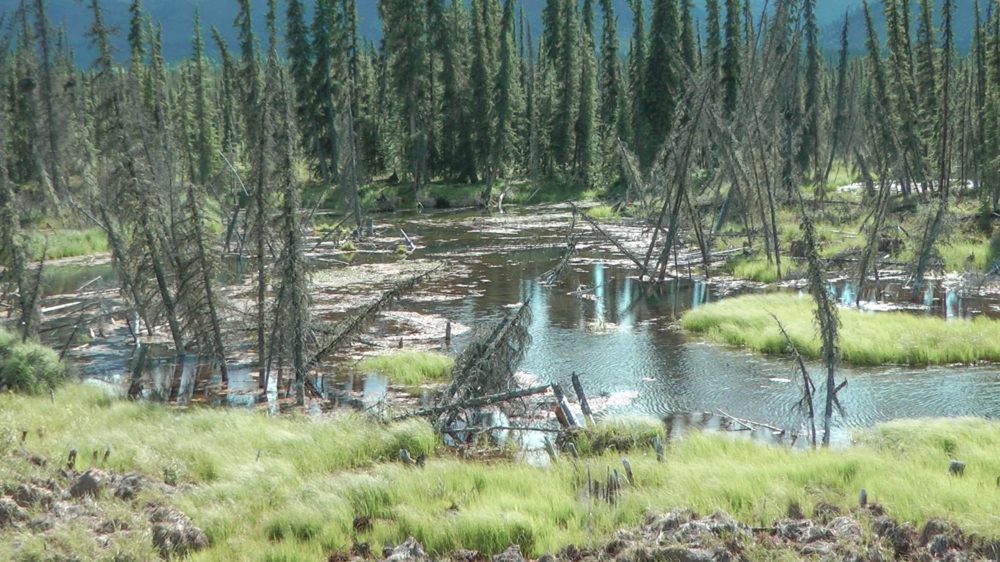
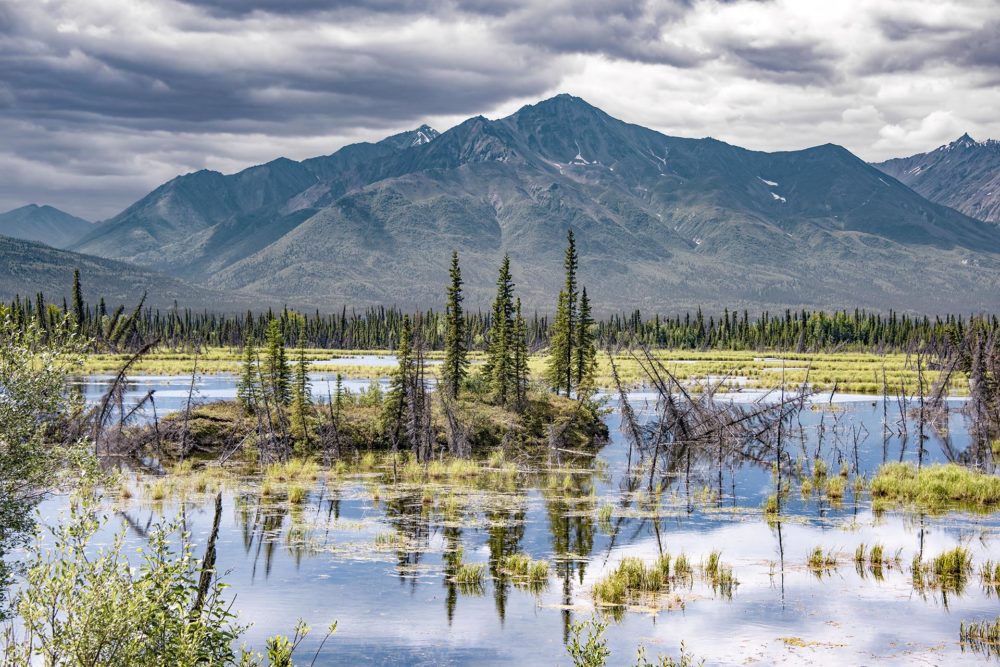
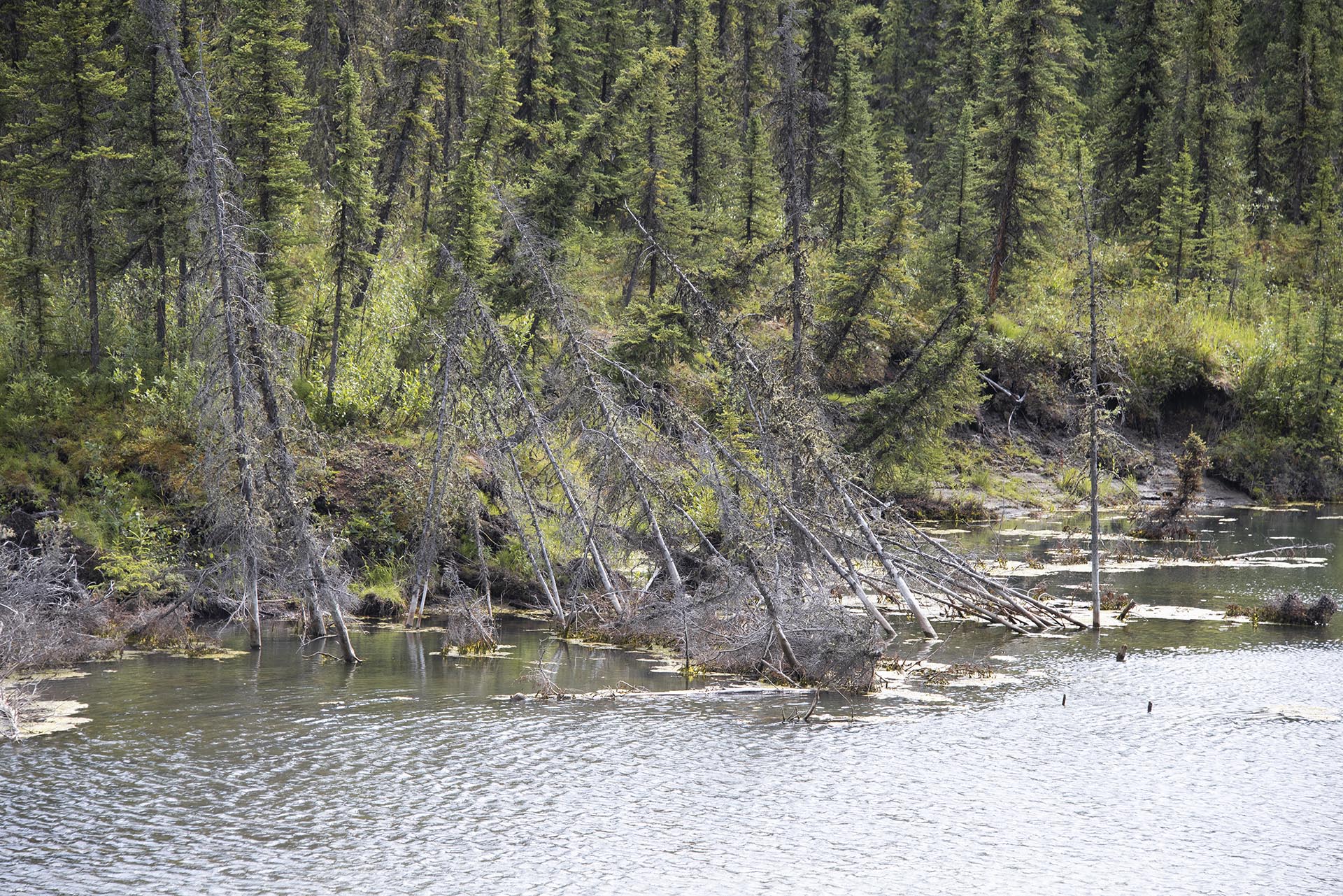
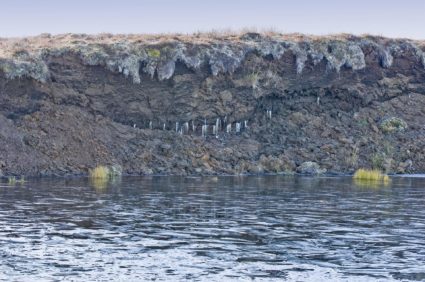

















Lengthy, but well worth the read. Although aware of permafrost thaw, didn’t previously know about the two forms it took. Overall, very informative.
Thanks!